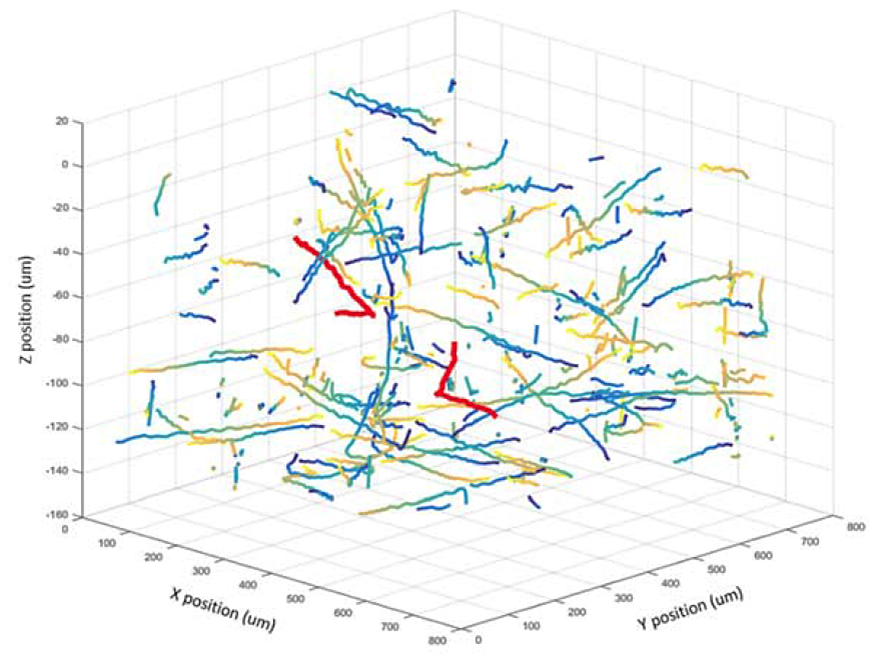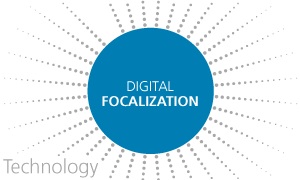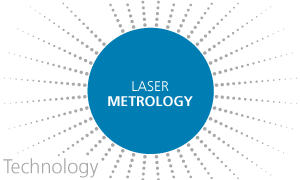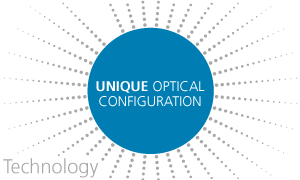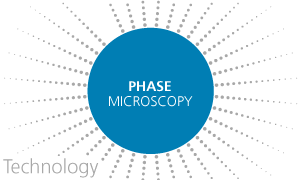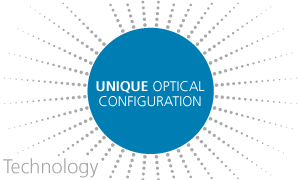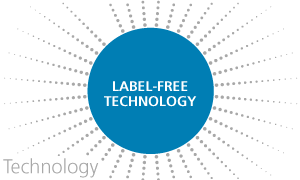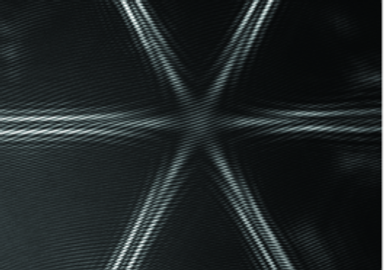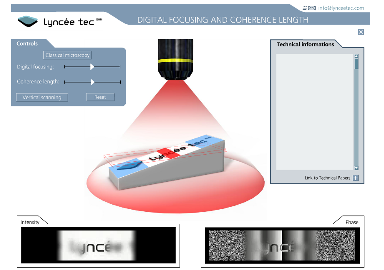Digital focalization
When Denis Gabor invented holography in 1948 [Gabor 1948], digital cameras and computers did not exist. Holograms were recorded on photographic plates, and were re-illuminated by a replica of the recording reference wave to be able to observe the 3D information. In 1967 Goodman proposed to extract the information by calculation, paving the way to digital holography [Goodman 1967]. Nowadays, cameras are used instead of photographic plates to record holograms, and modern PCs enable incredibly fast calculation of sample optical 3D information.
Being not limited by the images recorded in the camera plane, but being able to propagate the wave-field at any arbitrary distance of the measurement plane is an important strength of holography. Digital focusing achieves multiple image planes generation, allowing infinite focus [Colomb 2010, Ferraro 2005], particle tracking as well as velocimetry [Sohn 2011, Kim 2008]. Moreover, enhanced resolution and image quality can be achieved by including in the propagation path digital lenses for optical and chromatic aberration corrections [Colomb 2006].
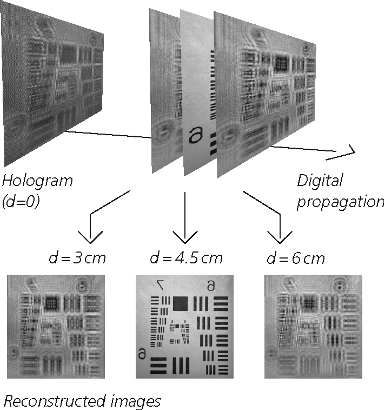
Can the system focalize samples digitally, without any mechanical movement of the sample?
Yes. The wave-field propagation distance can be adjusted live by modifying numerical parameters. Measurements with a sharp focus are performed, without any mechanical adjustment of the position of the sample along the optical axis.
Can digital holography post-process a measurement for getting a sharp focus when it has been recorded with poor focus?
Yes. DHM® records holograms. 3D information can be extracted from recorded hologram at any time. The propagation distance of the wavefront can then be adjusted to provide 3D measurements with a sharp focus. There is no risk of loosing long time-lapse measurement data due to bad focus.
Can DHM® provide images with extended depth-of-focus?
Yes. A Z-stack of measurement can be reconstructed digitally from a single hologram using a range of propagation distances. Different algorithms have been demonstrated to compute extended depth-of-focus images from this stack [Colomb 2010].
Can DHM® determine particles trajectories ?
Yes. A z-stack of measurement can be reconstructed digitally from a single hologram using a range of propagation distances. Specific algorithms enable to determine the wavefront propagation distance corresponding to the best focus for each particle. Performing this operation on a time-sequence of holograms enables to determine the trajectories of particles.
